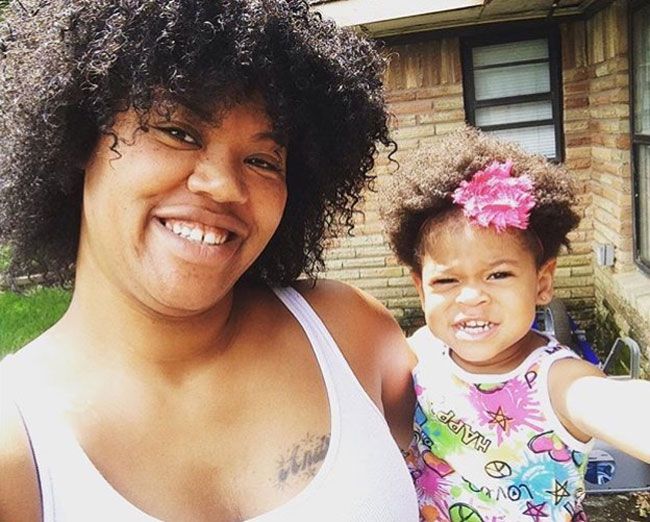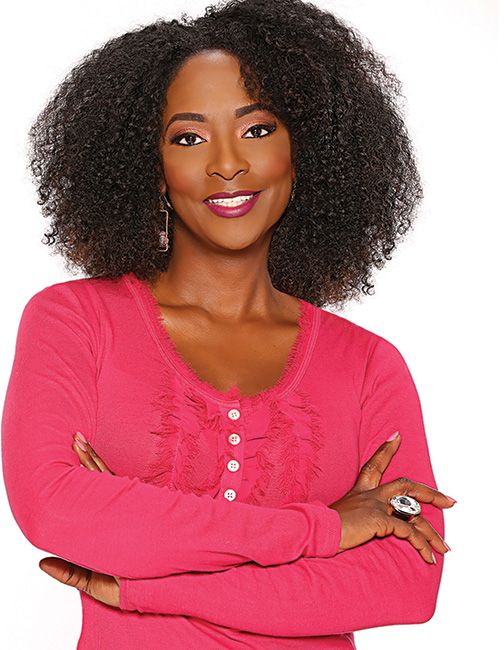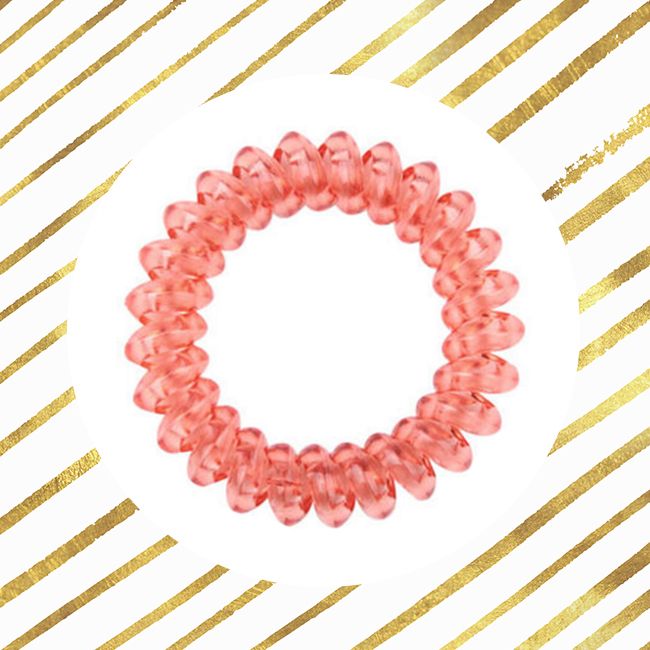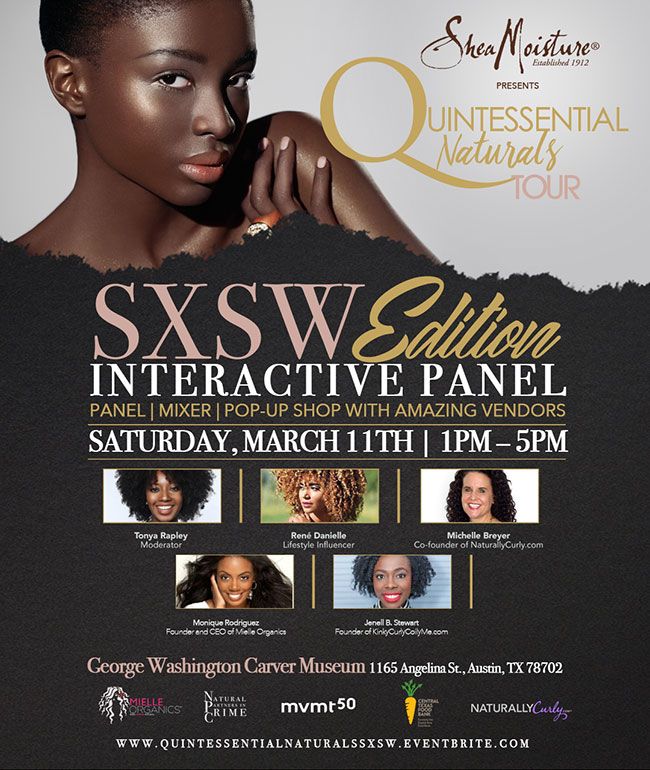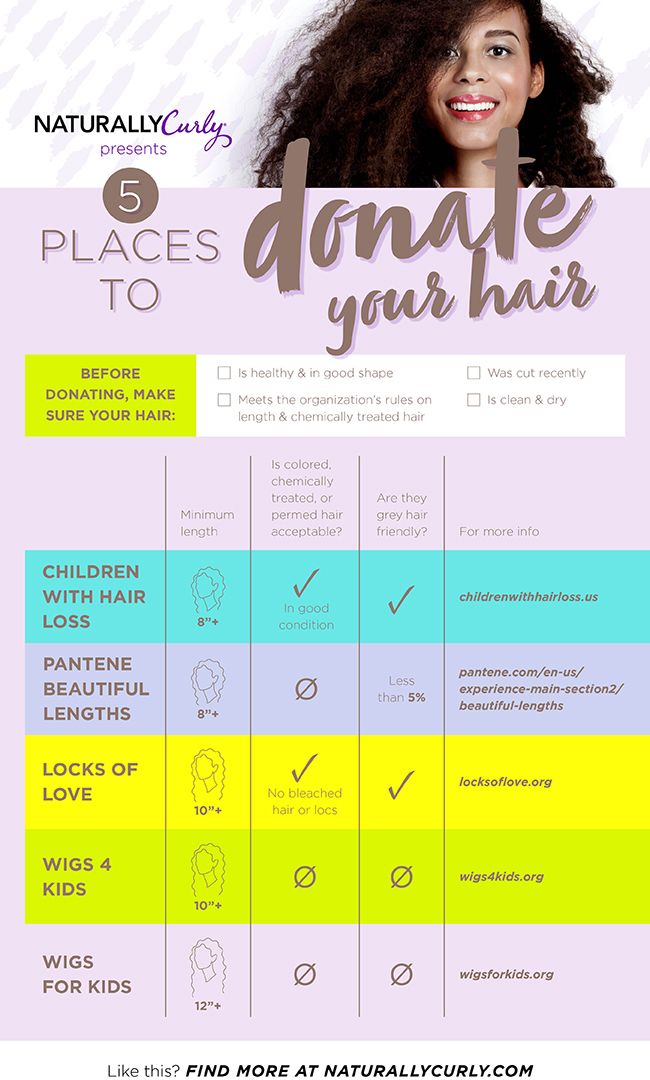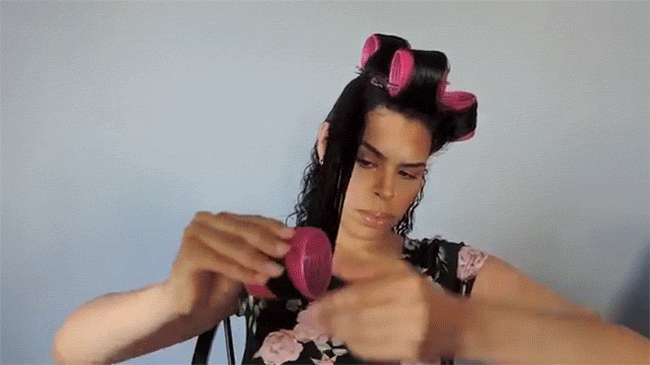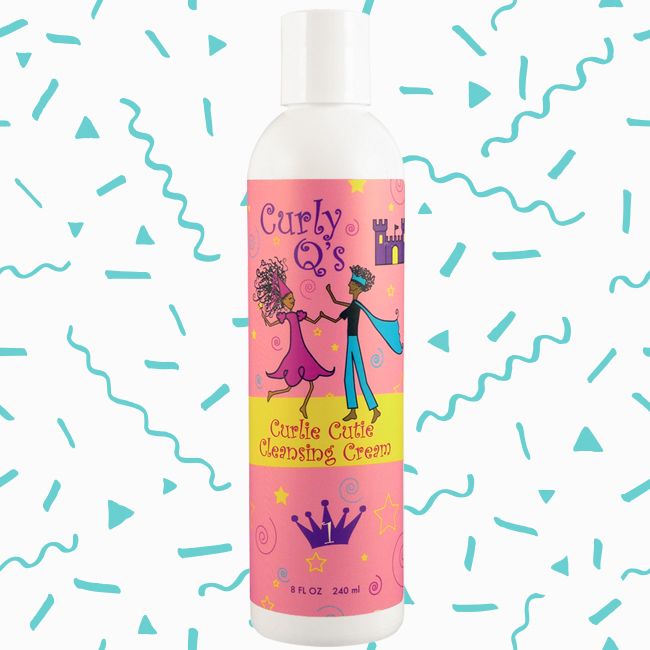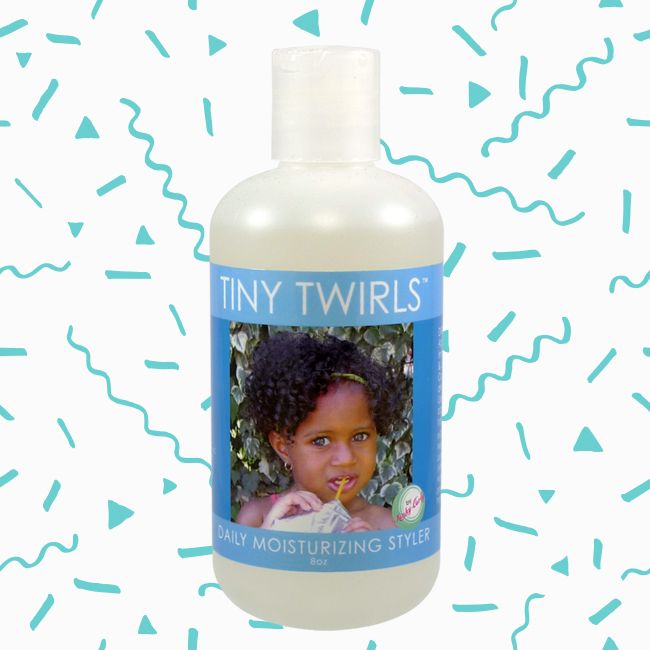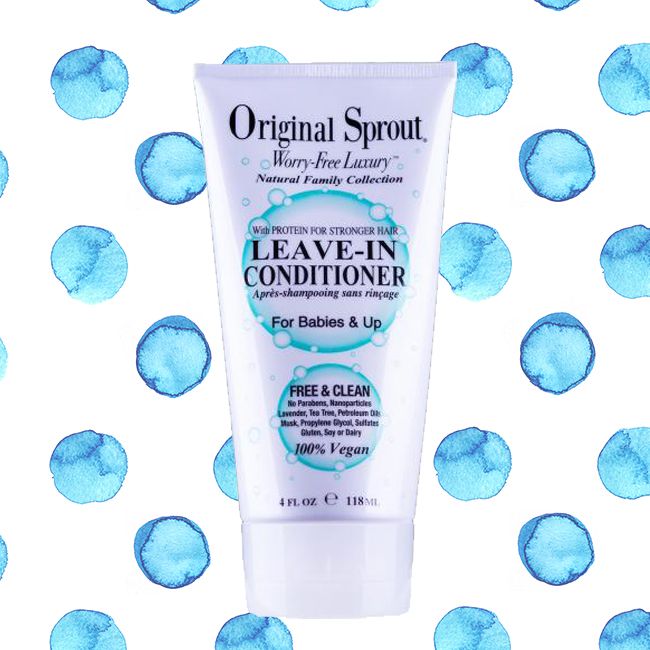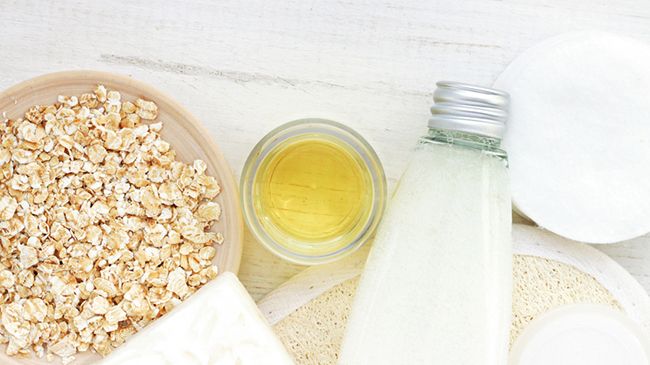Search Results: NaturallyCurly

My natural hair journey started in 2009; for me I honestly wanted to stop relaxing my hair so I did. Fast forward to 2014 when we found out we were expecting our second child, a little girl. We were elated and I was overwhelmed by the fact that I would inevitably have hair to comb. If her hair was anything like mine she would have a lot of hair and it would be very thick. My husband and I had several conversations about what we weren’t going to do to our daughter’s hair. At a very young age my mom started manipulating our hair (my sister and I”> from the time I can remember. I look back at pictures and as a baby, possibly one year old, I have rubber bands and things in my hair. We decided that wasn’t something we wanted to do. When I gave birth to my daughter Ariah on August 13, 2014 it was one of the best days of my life. She came into the world with a head full of hair (the heartburn told me that she would”> and she was perfect.
As she got older her straight hair started to curl up. My son’s hair was totally different, he had straight hair until he was 11 months old. Ariah’s hair on the other hand started curling up at two to three months.
I didn’t have to put much into her hair, fast forward to 6 months I noticed her hair was getting thicker and longer. We would go places and people would say “oh my God her hair.” I have been natural since 2009 but I never wanted to wear my hair curly, I would always straighten it. After having Ariah I wanted to wear my hair curly; I wanted us to match. She inspired me to love myself the way that God made me; she was authentically herself. The way I typically style her hair is free flowing and with a bow. Wild and free just like Ariah.
One day my husband picked my daughter up from daycare like he always does. I walked in the door and immediately said what is going on with her hair? Her hair was styled with a very straight part down the middle (had to have been done with a comb, mind you I don’t have styling products for her hair anywhere but our home”> and two fluff balls. Upon further examination it was determined that [her teacher] had placed two black rubber bands in my child’s hair. You know which ones I’m talking about. They were in so tight her edges were being pulled. I immediately took them down but it took around 15-20 minutes because her hair was being tangled in the rubber bands. My thought was complete shock and anger; who does another person’s child’s hair and doesn’t ask for permission?
I immediately become furious; every time I looked at my child and saw the indent of the ponytails I became angry. I kept trying to understand why she would do that. Granted I don’t style Ariah’s hair every day but to me I still felt like it was inappropriate and not her place to make that decision. In the two years since I’ve had Ariah I’ve heard so many questions about what “we’re” doing with her hair or what my plans are for her hair. I don’t know why that’s any of anyone’s business but what I do with my daughter’s hair is my business. I don’t have to answer to anyone. In fact, my husband knows I’m the one that deals with hair and picking out her clothes. I feel like she’s 2 and if I want to have her wear a fro until she’s ten that’s my prerogative. My husband’s family members were the first to ask me what we’re doing to Ariah’s hair, I kept trying to figure out what was wrong with it. I also had someone I knew that asked me “what, you don’t do protective styling on your hair? Well what about Ariah’s?” No. “Well are you planning on letting her wear a fro for the rest of her life?” If I so choose to.
My husband felt the teacher was out of line but also felt like it wasn’t that big a deal. I however, felt like it’s most definitely a big deal. Here are a few reasons why:
- She didn’t ask for permission
- She assumed it was ok to comb/brush her hair
- She put rubber bands in her hair
- She pulled her hair too tight
- She used a comb and brush that did not belong to us which brings about sanitation issues
What my husband, his family and countless others do not get is the story behind everyone’s natural journey. When I became natural it had nothing to do with anyone but my own preference. After having Ariah she made me want to love myself just the way God made me. I cut off half my hair due to heat damage in order for us to embark on this journey together. My hair was to the middle of my back! I take this very seriously. I don’t want Ariah to not love herself or allow other people to dictate how she feels about herself and her hair. My husband did feel that this was something that should be addressed to the teacher herself. I’m not saying she didn’t have good intentions but that will forever be ingrained in my mind. It’s frustrating when you feel a certain way about something and people tell you it’s not that serious; it is to me.
Has this ever happened to anyone else? If so how did you handle it?
Thank you so much to our reader, Joy Tucker, for submitting this story to us!
Want to pitch your story to NaturallyCurly.com? Shoot us your idea here!
NaturallyCurly at first glance, is a space dedicated to women. Nevertheless, it is a space that men with curly hair can learn a great deal from. After all, men have enough space in this world as it is. So, what’s my take here? Well, maybe that’s why it’s taken me so long to write this article.
This is a huge THANK YOU to everyone at NaturallyCurly for doing what you’re doing.I have learned more about my hair from the writers and community at this website than any other. I know I’m not the only guy out there who uses this site on a regular basis. The point of this article is to share a few reminders with guys who are new to the site. Last year I was told that curly hair “makes men look weak” by a potential employer at a job interview. To which I responded: It makes me strong. After all, my 17 month old son, Cullen has the exact same curl type. What kind of example would I be setting for him if I had accepted the employer’s comment? My hair looked particularly awesome that day so I also had extra confidence. That wouldn’t have been possible without NaturallyCurly. Your website has helped me to become a more confident man as well as more skilled at managing my curly hair and my son’s curly hair.
I know that there is a decent sized population of curly haired men out there who, having nowhere else to go, get their tips from NaturallyCurly. I am one of them. So here are 3 tips for the male readers out there on embracing your curly hair and how to use this website as a resource.
1. It’s all hair, man.
Hair is hair. Both women and men have it. All that changes are the textures and styles. Texture was given at birth and style is something we choose within the limits of our texture. Methods used to care for curly hair like LOC or Curly Girl Method apply just as much to men’s hair as it does to women. Use it! Do not think for one minute that the Curly Girl Method makes you girly (unless that’s your thing – which it’s cool if it is”>. It’s an excellent way to take care of your locks and keep them healthy. The same applies to most of the information on this site. You can learn a lot here if you keep an open mind.
2. Don’t be afraid.
Have no fear. Yes, this site is feminine. It was built by some very amazing, forward-thinking women primarily for other women with curly hair. If you have a problem with that, I don’t know what else to tell you other than “Deal with it.” Just because you’re here browsing the articles for usable tips to apply to your hair doesn’t necessarily make you feminine, and if you are an effeminate man, you’re probably not worried what other people think anyways. No one here is going to judge you. You’re learning how to take care of what grows out of your head rather than resort to shearing it off. Alexander the Great had curls, why can’t you? Unless we’re talking about an incredibly ornate princess updo (and if you have that, please rock it!”> you can make anything on this site (styles, protective styles, products, DIY recipes, hair care methods, regimens etc.”> work for you (ie. more masculine…because you want your hair the way it’s supposed to be”>. For instance, when making a DIY product, instead of using lavender scented essential oil, try cedar if you want to. It’s all about perspective.
3. You are learning from the masters of curly hair.
Have you just started growing your business cut, buzz cut, or undercut out to realize that you have curly hair? I started growing my curls about 17 years ago when I was in high school and I can tell you I had no idea what I was doing. It did not look cool and I could not make L.A. Looks work for me no matter how hard I tried. Through trial and error, and after many years of blow drying it straight, I found this site. Not only have I learned how to take better care of my hair, but I’ve learned how to make my own hair products. There is a big possibility that the women who run this site have been managing their curls a lot longer than you have. You are learning from the masters.
Overall, this website has made me a more confident man. I feel incredibly welcome here and really enjoy the wealth of information I’ve been taught through reading NaturallyCurly articles. So, I encourage men to not be put off by the fact that this site has been originally geared towards women. There a ton of helpful articles here, so stop on over and build confidence in building your mane.
Thank you so much to our reader, Ryan Gilbert, for submitting this story to us!
Ryan is an activist and singer/songwriter, English teacher, and former museum curator in Seoul. He is also first and foremost, the curly haired dad of a curly haired son.
Want to pitch your story to NaturallyCurly.com? Shoot us your idea here!
This trailblazer of natural, curly, coily hair broke ground for and ushered in the acceptance, practice and proliferation of natural hair care, natural hair care techniques, natural hair care products and the first and largest natural hair care event in the world.
The Queen of Natural Hair Shares Her Story
Taliah Waajid, America’s natural hair care visionary, has been described as the modern Madam C.J. Walker. Like that great and renowned hair care entrepreneur of the late 1800s and early 1900s, Taliah began her journey simply by addressing a personal need. And in doing so, like Madam Walker, Taliah ended up revolutionizing the hair care industry.
As a girl, all the kids Taliah knew had relaxers but her mother refused to let her do the same. Because her mother couldn’t do hair at all, the future natural hair professional was forced to teach herself how to do her own hair which was always up for discussion among other children.
“Why is your hair like that?” they asked. “Why won’t your mom let you have a perm?”
Young Taliah spent hours in her room working on her hair. She whipped up mixtures of Jergens lotion, Vaseline, water and anything that would allow her to comb through her thick, coily mane. She braided her hair and figured out styles that worked for her. A lot of times she received compliments and hairstyling became her passion. By age 14, Taliah was earning money doing hair for her family and friends and dreamed of working in a salon doing natural hair. That dream was revolutionary in and of itself because salons declined to offer such services.
Taliah was 16, riding a bus in New York with her cousin when she saw a window sign on 125th Street that said “Hair Braiding.” She got off the bus, went into a room in that building and saw several women braiding hair as a throng of customers waited their turn. She approached the owner, Barbara Terry, and told her that she wanted to braid hair. Ms. Terry replied, “Okay, do that lady right there.” The lady at which Ms. Terry pointed actually let the fledgling stylist do her hair!
Taliah impressed Ms. Terry with her skills and braided customers there for the rest of that day and the next several years. The young stylist hustled hard working at home and in Ms. Terry’s salon. While at Ms. Terry’s, she learned the foundations of healthy natural hair care and maintenance. She also picked up how to run a professional salon business and practice good customer service—lessons she still uses today to formulate products and respond to her customers’ needs.
Indelible Entrepreneurial Spirit
The natural hair entrepreneur wanted to strike out independently with her own business in a high-end salon, but braiding and natural hair care wasn’t popular then as many salons looked down on and refused to offer such services in their establishments. Taliah finally found a booth space in a salon next to a corner bar which wasn’t high end at all. Still, she produced such great work that she enjoyed a loyal clientele of upscale customers who continued to travel from as far as New Jersey and Connecticut just to have her style their hair. The go-getter stylist simultaneously attended beauty school and earned her license in cosmetology. From the moment she began earning money in natural hair care, she knew she would eventually open her own natural hair salon. Taliah did so at a 1500 square foot space in Harlem in which she rented out five other booth spaces and hired a receptionist.
Sure, Taliah experienced setbacks. As she built her business, she got married, had a daughter, got divorced. She didn’t want to raise her child in New York and opted to move to Atlanta where she had to start all over by renting a booth in a salon. She borrowed $900 from her father to participate in the Bronner Brothers International Hair Show, a show that had amazed her on previous visits. Taliah was so excited to have her own booth. In preparation, she provided ten hair models with outfits on loan from the mall and styled their hair. She had them walk through the show passing out cards and drawing attendees to her booth.
It was difficult growing a natural hair business in Atlanta. Taliah gave people cards promoting natural hair care services and they’d return the cards as if she were trying to convert them to a new religion. Folks acted as if she was offering something that was going to kill them. They’d say, “Oh no, natural hair? I can’t do that but it looks nice on you.” Yes, many complimented her hair but had a hard time accepting that it wasn’t styled specifically to attend some grand event. She often had to explain that the style was simply how she wore her hair.
Taliah often commuted between New York and Atlanta to make ends meet. This satisfied customers she’d left behind in New York even as she built her business in Atlanta. After a while, however, she had to make a clean break from New York. When she was able to reestablish her own salon, she named it Braids, Weaves and Things because she literally had to do braids, weaves and other services to make sure she kept herself and her daughter fed.
Natural Hair: More than an Inspiration, It’s a Profession
In time, Taliah was able to educate customers on the benefits of natural hair. As she consulted with them, she didn’t talk about the negative aspects of relaxers but rather shared all the benefits of chemical-free hair. With each new visit to her shop, seeing her natural hair grow and their natural hair thrive helped change their minds. Also, Janet Jackson’s braids in the 1993 movie Poetic Justice influenced many. Braiding, conditioning and going natural became more accepted.
She knew natural hair would grow in popularity because it freed people from applying potentially dangerous, scalp-penetrating chemicals to their bodies. Taliah began to see other stylists respond to the demand for braiding as well as the hair loss and receding hairlines resulting from poor application. Recognizing the need to properly train stylists, she designed and administered workshops and seminars to teach stylists the benefits and techniques of natural hair care. These workshops which initially taught braiding and twisting grew into three-day, quarterly seminars offering 30 different techniques. The seminars also incorporated newer styles, marketing tips and tutorials on how to build and promote professional natural hair care businesses. These symposiums now take place once a year and have trained thousands of stylists worldwide.
In 1996, Taliah developed Black Earth Products, the very first complete line of hair care products ever to address natural hair, braids and locs style and maintenance needs. This line arose from her clients wanting to know what products to use at home to recreate and maintain their natural looks when such choices didn’t exist in the marketplace. As time went on, she developed four more lines answering the need for options for women’s styles, children’s hair, men’s hair, curly hair and those who want to maintain the health of their natural hair as they wear protective styles.
The World Natural Hair Show
The World Natural Hair Show was born out of the desire to create an all-natural show free of relaxers and chemicals. Having attended so many other shows, Taliah noticed a lack of natural hair solutions. She also wanted a platform where stylists and consumers could learn about natural hair, products, and techniques. She’s since updated the show’s name to World Natural Hair and Healthy Lifestyle Event to reflect her customers’ tendency to go natural with their hair as well as their overall wellness. The 20th annual event is this April 22-23.
Throughout the past 25 years, Taliah has always been inspired by choice: the choice to proudly wear her hair natural, the choice of styling options, and the choice of techniques and products to fulfill natural hair care needs. Because of her many contributions to changing the way women love themselves, their beauty and their ability to celebrate their natural look, no woman is restrained to chemically-treated styles or those requiring heat application.
Taliah is thrilled by how the industry has adjusted to this awakening in natural beauty. She is excited to see so many female manufacturers follow her lead to give naturalistas options which never existed before. She is motivated to uplift and support women in whatever way she can and is pumped to amplify the message her parents taught her of appreciating her own beauty and worth. She continues to respond to customer needs and innovate within the natural hair movement. Again, like Madame C.J. Walker she sees what a blessing her personal journey has been and how many lives have been improved. She is still working hard today to do more.
Have questions to ask this leader of the natural hair industry?
Great! Share your thoughts and ask questions below.
Remember to subscribe to the NaturallyCurly newsletter today for more curl-centric content!
We can’t wait to see you at The World Natural Hair Show in Atlanta, Georgia!
When it comes to keeping hair up and out of the way, two popular options have always been the bun and the ponytail.There are different types of hair ties that all serve the same basic function of keeping hair pulled back and away from your face. When choosing a hair tie, make sure that whatever ties you choose will not tug at or pull your hair, which causes hair breakage. Among the different types of hair ties, there are two main designs of hair ties: either elastic based or non-elastic based. From your oversized scrunchies for sleeping to your thin headbands for working out, the following are some options to choose from when attempting your next low-maintenance protective style.
Telephone wire ties
These ties are typically made without elastic and can create tension by being wrapped repeatedly around a section of hair. While they offer less hold than elastic bands, these hair ties won’t tug at your roots while wearing and are easier to remove. Use a twist tie at night to pineapple and preserve your curl pattern. Here’s how:
Cotton-wrapped elastics
The most commonly used type of hair ties, these are elastic bands wrapped in cotton. Offering great hold without tugging at hair when you remove them, a cotton hair tie is available in a wide variety of colors and affordable, found in most drugstores.
Scrunchies
Oversized and a bit of a throwback to previous decades, scrunchies are large fabric hair ties with elastic cores. They are great for a loose hold that won’t damage hair, especially while sleeping or exercising. The scrunchie of today has evolved their bands to include fashionable braided and thinner options that the standard scrunchies of the past did not.
Bungee bands
While the appearance of these hair ties may seem scary at first, bungee bands are a popular choice because these elastic bands open up with hooks at each end. While you might think they are potentially more damaging for hair and harder to use, they are actually safer than traditional elastics. This type of hair tie is also reliable for tucking away your ends for a longer time frame than the options above. Here’s how to make a bungee band at home:
What type of hair tie do you use?
Let us know in the comment section below.
Austin’s annual SXSW festival is quickly approaching, and we’re thrilled to be the media sponsor for the Quintessential Naturals Tour hosted by Natural Partners in Crime. The NaturallyCurly team will be at the event with a fun social experience, along with an interactive panel and activations from some amazing brands and influencers. I spoke to Sabrina Boissiere, founder of Natural Partners in Crime and the event’s producer about what attendees can expect at the first stop of the tour.
I wanted to put together a well-rounded tour that encompassed hair care brands, influencers, and local businesses. As an event producer for over 5 years in the natural community, I’ve been to a lot of events and tours and I’ve seen the excitement. Being a New Yorker you always have amazing events, and Atlanta and Dallas, but living in other cities you often get missed.
The thought process behind Quintessential Naturals was encompassing what the word “quintessential” means, and that is representing the most perfect or typical example of quality or class. So top of the line brands, top of the line influencers, amazing businesses and brands that are local that you can showcase at your event.
I picked the 5 locations because realistically I wanted to make sure I hit some top markets: Austin, Boston, Charlotte, Philly, and Miami. SXSW is a machine in itself but it had never had an official natural hair event. I started working with mvmt50 which is a black tech organization, and they said they want to partner with you and do something at SXSW because there are so many amazing naturalistas that come to this event. They said NaturallyCurly has been someone they’ve worked with for the last few years, and that you come out support the community, you’re a digital media house and it’d be great for me to align myself with you as well, so that became a perfect marriage.
The first stop, SXSW, is a very unique event in that it’s at a historical museum the George Washington Carver, we will have an amazing panel, the theater space, and we have different types of activations where people get to experience these brands on a different level instead of just going to a table and buying things.
I’ve never been to SXSW before, I know it’s a machine and we already have 1200 RSVPs so we’re gonna have a lot of bodies there. When I reached out to brands I wanted to make sure that whoever came on board had a lot to offer, so when I reached out to SheaMoisture I was really fingers crossed that they would come on board. They understood the vision that I had and they’re about exclusive inclusivity. So basically they have something for everyone. They’re always on the cutting edge of having great products, and this is their 25th anniversary so I’ve been working with Rich and the team to showcase some of the things they’re going to be dropping this year.
Throughout the tour we have a charity component, which I’m really big on. I really wanted to focus on something really tangible, so we’re working with food banks at each stop. That’s important because it’s something they can physically bring and hand over to give to people in their community. There are people who are struggling to feed their families and pay their bills, it’s unfortunate but it’s the reality of this country. We’re truly honored to be working with the Central Texas Food Bank as the charity selected for the SXSW stop. As a leader in the fight against hunger for nearly 35 years, CTFB’s mission is to nourish hungry people and lead the community in ending hunger. SheaMoisture upped the ante by saying that whoever brings two or more cans will get product from SheaMoisture. That’s an amazing thing that they’re willing to do.
There are so many amazing businesses and brands that I haven’t even tapped into for some of these cities so I’m excited to see what the vendors have to offer – from beauty to skincare to makeup and of course hair brands, jewelry, accessories, just really showing the communities their own businesses. I think a lot of times we tend to shop outside of our communities because we don’t know any better, but this will give attendees a chance to support their community and hopefully, if things work out they will become consumers of these brands.
That’s my goal when creating these events.
When
Saturday, March 11, 1-5pm
Where
George Washington Carver Museum
1165 Angelina St.
Austin TX 78702
Tickets
You can register for free here
We can’t wait to see the natural hair community in person! Our Co-Founder Michelle Breyer will be speaking on a panel with influencer Rene Danielle, Founder and CEO of Mielle Organics Monique Rodriguez, Founder of KinkyCurlyCoilyMe Janelle B. Stweart, and moderated by Tonya Rapley, Founder of My Fab Finance.
Hair loss is a sad fact of life for many people. When that hair loss is caused by a life-threatening illness such as cancer or a chronic medical condition, it can make the hair loss feel like a devastating blow. When most of us cut our hair, we don’t think about how that hair could change someone else’s life for the better.
While donating your hair after a haircut is a great way to make a lasting difference, it can seem confusing to know where to start. They all have different requirements for the length and condition of your hair, so while you may not be eligible for one organization that does not rule you out for hair donation entirely. With our list of five places to donate hair, you can easily share your unwanted locks with someone in need!
Before you donate your hair, there are a few things you should know.
- Make sure hair is healthy and in good shape.
- Hair must be clean and dry when donated.
- There are length requirements. Hair cannot be used for wigs if they do not meet these requirements. No clippings.
- Hair should be recently cut. Hair that was cut years ago is harder to make into wigs.
- Just because your hair is chemically treated doesn’t mean you can’t donate! Check with each organization to make sure.
- Make sure you follow all guidelines set forth by the organization you have chosen.
- When mailing the donation, make sure you place hair in a Ziploc bag inside of an envelope instead of simply putting hair in the envelope. This helps keep the hair intact and safe.
- Some organizations offer free wigs while others charge recipients on a sliding scale. If this matters to you, make sure you read the company website for further information prior to donating.
5 Places to Donate Hair
1. Locks of Love
Minimum length: 10 inches or more.
- Colored/chemically treated/permed hair acceptable? Yes. No bleached hair or dreadlocks.
- Gray hair friendly? Yes.
- Address: Locks of Love 234 Southern Blvd West Palm Beach FL 33405-2701
2. Pantene Beautiful Lengths
- Minimum length: 8 inches or more.
- Colored/chemically treated/permed hair acceptable? No.
- Gray hair friendly? Less than 5% gray is allowed.
- Address: Pantene Beautiful Lengths Attn: 192-123 806 SE 18th Ave Grand Rapids MN 55744
3. Children with Hair Loss
- Minimum length: 8 inches or more.
- Colored/chemically treated/permed acceptable? If in good condition, they will accept the donation.
- Gray hair friendly? Yes.
- Address: Children With Hair Loss 12776 Dixie Hwy S. Rockwood MI 48179
4. Wigs for Kids
- Minimum length: 12 inches or more.
- Colored/chemically treated/permed acceptable? No.
- Gray friendly? No.
- Address: Wigs for Kids Hair Donation 24231 Center Ridge Rd. Westlake OH 44145
5. Wigs 4 Kids
- Minimum length: 10 inches or more.
- Colored/chemically treated/permed acceptable? No.
- Gray friendly? No.
- Address: Wigs 4 Kids 30126 Harper Ave St. Clair Shores MI 48082
If you know of an organization that we left off the list, please share it below!
When it comes to beauty products, the market has exploded with options based more in botanicals over the years. With a move away from harmful chemicals and additives, the beauty industry continues to find new and exciting uses for naturally occurring ingredients. As a favorite for many reasons, the benefits of hemp oil make it an ideal choice for inclusion in your beauty routine. Hemp oil is extracted from the cannabis plant. While cannabis is known for marijuana, hemp oil is extracted from the seeds which are free from the agents that offer mind-altering states. Hemp oil is, in most cases, a safe and natural ingredient that can be used for many purposes.
1. Hemp Oil Restores Skin
One of the leading benefits of hemp oil is the way it nourishes skin. With a high content of essential nutrients, such as omega 3 and omega 6 fatty acids, this powerhouse is great for combating a range of skin concerns. It is a natural emollient and moisturizer ideal for a range of skin types and concerns. Use hemp oil for dry, tired skin to give it a boost. Skin dehydrated? Hemp oil can help increase water retention and elasticity for a younger, suppler appearance. It can even be an effective way to calm eczema and inflammation.
2. Hemp Oil Heals Hair
Another one of the top benefits of hemp oil is its ability to heal dry, damaged hair. The lipids found in this potent extract are rich in proteins and fatty acids. Many hair care products already use hemp oil in their formulas for the incredible moisturizing and healing it offers. A common use for hemp oil is the treatment of psoriasis. This condition of the scalp can be created by a lack of nutrients and hemp oil can help provide those nutrients. If hair is dry and brittle, hemp oil is a great conditioner to give hair the nutrients it needs.
A common use for hemp oil is the treatment of psoriasis.
3. Hemp Oil for Other Purposes
Hemp oil is an overall powerhouse for your health. Aside from the benefits to skin and hair when applied directly, hemp oil when worked into a diet has a variety of benefits. Fatty acids and lipids are the key to good health in several different ways. With hemp oil being packed with these elements, the benefits are numerous. Here are a few non-beauty benefits of hemp oil:
- Lowers cholesterol
- Maintain hormonal balances
- Helps moderate blood sugar
- Prevent varicose veins
- Prevent the growth of free radicals
Have you used hemp oil in your regimen? Share your thoughts below!
We don’t typically talk about straightening our hair, but we know that versatility is one of the top reasons curlies love their hair. Unfortunately, a common way of flattening our strands is by sticking them between a straightener or using hot air and brushing them out. Applying heat is our enemy… it’s easily one of the most damaging routines for hair. While heat may make hair straight and temporarily sleek, it also strips it of its natural moisture. Hair that is over-heated can become so dry and brittle, that it leads to loss of curl pattern, increased breakage and, in some cases, loss of entire strands.
While many believe that heat damage is caused by repeated use of heat tools, the truth is that just one use can cause permanent damage. But have no fear! We have compiled 4 methods for efficient no-heat straightening. Note that most of these methods work best for Type 2’s and 3’s. You may not get the stick straight results that you do with a flat iron, but at least your curls will bounce back damage-free afterwards!
The Wrap Method
When hair is still wet and freshly combed, split it into sections and pin them individually against your head, ensuring they are flat and tangle-free. When finished pinning, put a head wrap or scarf around your head to ensure the hair stays in place and secure it with bobby pins. To avoid frizz, use a silk scarf to eliminate any friction between the hair and material. As Natalie says in her tutorial, make sure you allow yourself at least 6 hours to let your hair fully dry before taking it down and revealing sleek, straight hair!
The Elastic Method
The toughest part about this method is finding your all your lost hair ties that you swore grew legs and ran off. When you do find them and your hair is wet, comb out any tangles and apply a frizz-free product. Put your hair in a ponytail low enough to avoid any pulling. Then, start sectioning the ponytail with additional hair ties in small increments of about an inch apart. Make sure you use soft hair elastic ties to avoid hair breakage. Note: this method is similar to “banding,” which is how you can stretch Type 4 hair to make it longer. This same “banding” method works to actually straighten Type 2 and 3 hair.
The Curler Method
While using curlers for straightening hair may seem counterintuitive, it can actually help flatten hair while you sleep. For this to work, make sure you use large, wide curlers and roll them very tightly so no curl is allowed in the hair. Start by spraying hair with straightening spray and make sure hair stays wet throughout the process for the best results. We love Beauty With MJ’s tutorial on this!
Cool Blow Dry
Avoiding heat doesn’t mean you have to give up on your blow dryer altogether. You can use it on the cool setting while sectioning and continuously brushing hair with a vented brush to get a straight look. Start by using a product such as Carol’s Daughter Chocolat Smoothing Blow Dry Cream, Paul Mitchell Super Skinny Serum or Twisted Sista Frizz Control Straightening Blow Dry Cream. This method may take a little longer than using heat, but it’s much safer for achieving straight hair.
What’s next?
Our next question is, “Can You Straighten Curly Hair with a Steamer?“
Our friends at Cantu have helped wavies go straight and back to wavy again!
For more inspirational articles like this, sign up for our newsletter!
Curlies are picky about what we put in our hair, so it’s only natural to be even more careful about products when it comes to our curly kiddos! Luckily, today’s market offers a large selection of products for little ones that are natural and kind to their locks.
Here are a few natural hair products for kids that are easy to find and even easier to use. You may need to experiment with different products at first to find what works best for your child, so here’s our secret: buy the travel-sized product to test these out before you commit!
Carol’s Daughter Hair Milk
This isn’t specifically a children’s line, but the Carol’s Daughter Hair Milk products are easy to apply, comb through and wash out. The Leave-In Moisturizer doesn’t leave residue or buildup, so curly kids will have frizz-free, nourished curls with lots of shine. Plus, you could always steal some of theirs when you run out.
Pros: sulfate free, paraben free, protein free, alcohol free, petroleum free, mineral oil free, artificial color free
Curly Q’s
If you like CURLS for your hair, then you might want to try Curly Q’s, their natural hair line for kids. They contain the same natural oils as your favorite CURLS products but are specially formulated for sensitive young scalps. Start with the Curly Q’s Cleansing Cream and Conditioner, then detangle with the Curl Moisturizer/Detangler. You and your child will also love how these products smell!
Pros: sulfate free, paraben free, petroleum free, mineral oil free, artificial color free
Honey Baby Naturals
Honey Baby Naturals is one of our absolute favorites for kids. This line includes a gentle Shampoo, Softening Conditioner, leave-in conditioner, and Shea butter styling cream. The not-so-secret ingredient in these products is honey, which not only moisturizes hair, but your baby’s sensitive scalp as well. You will feel so great about using these products during bath time!
Pros: sulfate free, paraben free, mineral oil free, artificial color free, cruelty free
Blended Cutie
Sound familiar? That’s because it is. Blended Cutie is created by the same botanical-loving minds behind Blended Beauty. All of their products are formulated with naturally derived ingredients to nourish and protect those precious little locks. They even break down their kids products into corkscrew curls, spiral curls, afro curls, cupid curls, and big curls and waves.
Pros: paraben free, silicone free, sulfate free
Tiny Twirls
If you’re a fan of the Kinky-Curly line, then take a look at their Tiny Twirls products for kids. Some stores even carry these with the adult products as well. Their Daily Moisturizer is great for kids on the go who need some extra moisture, but it’s lightweight and won’t leave an oily film on hair. Their Detangling Conditioner is also safe, natural and great for kids with tangles, knots, and dry hair.
Pros: organic, fragrance free, cruelty free
Original Sprout
Original Sprout Leave-In Conditioner is all-natural and helps strengthen your kiddo’s delicate strands while keeping them tangle-free. You’ll love how soft it leaves your child’s hair that you may even try it on your own (It’s okay, we won’t tell anyone”>! After conditioning, use the Natural Styling Balm for all your child’s cute hairdos.
Pros: organic, formaldehyde free, paraben free, silicone free, sulfate free, artificial color free, mineral oil free, cruelty free
…or DIY!
Lastly, try making a refreshing spray for your child with some distilled water and drops of lavender oil from your local health food store. This spray can be used to refresh curls and even keep frizz down. Plus, the pleasant fragrance is natural, light and calming for your child. When looking for natural hair products for kids, making your own can be a fun and easy option!
I’m sure at some point, you’ve visited your parents at their house and they’ve pulled out the old, dusty childhood photo albums that you’ve been hoping would stay neatly tucked away for centuries. When you start going through them, have you ever noticed the difference in your kid curls verses the curls you have now? If you spend a little more time and look a little closer, you’ll notice that your curls have actually had an evolution of their own over the years. Your baby, too, will have this crazy rollercoaster of a curl experience.
What causes hair to curl?
Naturally curly hair is determined genetically. The gene for curly hair is said to have incomplete dominance over that for straight, so an individual inheriting one straight and one curly gene may have a mix of the two, resulting in wavy hair.
As a child grows, the size of the hair, by diameter, changes and grows as well. Therefore, babies may start off with fine, straight hair, or even thick, lush locks, and after just a few months or a year, their “inherited” curls may begin to pop up! Just like adults, changes in growth cause changes in our baby’s skin and hair as well. However, babies grow at such an extremely rapid rate, physical changes happen daily. By the time kids grow to be adolescents, major growth changes slow down, resulting in an “evening out” of physical attributes. The hair’s curl pattern will continue to change as we age, along with the changes in hormones that all men and women undergo.
Can you tell if a baby’s hair will be curly?
It is impossible to tell which genes your baby will inherit. You’ve probably heard the old wives’ tale that says that heartburn during pregnancy signifies a thick head of potentially curly hair. Researchers at Johns Hopkins University Medical Institutions actually surveyed a group of mothers and found that 82 percent of those who had moderate to severe heartburn during pregnancy gave birth to a baby with an average or above-average crop of hair, while most of the women who didn’t have heartburn had a baby with little to no hair.
This heartburn theory may explain whether or not your baby will be born with thick curls, but this will not necessarily be his or her hair in their teen years and adulthood.
If you have a little kiddo with curls, it’s hard to step away from the cute clips and headbands. After all, they’re just so adorable and your very best friends gave them to you at your baby shower! However, it’s best to wait until your little prince or princess is a bit older, with stronger hair. Pulling hair into braids and ponytails can result in major damage to your baby’s strands, as well as irritated skin and scalp.
Your little one may have lots of little cowlicks or funky natural mohawks. This is usually due to the fact that the chemical bonds, creating the hair texture, are still being formed. Therefore, let your wild child – aka, baby – wear their hair au natural. Try to avoid putting products or clips into your baby’s hair to guide it into submission. But don’t worry; by year one, your child’s hair will mostly likely be more self-contained.
Enjoy the many stages of baby and toddler hair. Just remember that as your child grows and changes, so does his or her hair. Embrace these moments and remember to take lots of photos! After all, you know it will be fun to pull out the albums in 30 years just as your parents did for you.
Why does scalp health matter?
Healthy hair is the product of a healthy scalp. If your scalp is irritated, itchy, or dry, your strands will pay the price. According to leading hair restoration surgeon, Dr. Robert Dorin, “Hair follicles need natural oils from the glands that surround them to function. If you have a dry, irritated, or unhealthy scalp, the hair your follicles produced will likely be drier and less manageable, too.”
An easy way to remedy the situation is a DIY scalp mask. While there are a ton of products on the market aimed at treating hair and scalp issues, sometimes it is just easier to whip it up yourself at home. You can also make adjustments to your recipe to suit your specific scalp’s needs.
So how do you make your own DIY scalp mask? Well, that depends on what results you are looking to achieve. A DIY scalp mask can be really simple. Sometimes it can even be just one key ingredient! While you could add other ingredients, a DIY scalp mask is actually better the simpler it is. A scalp with issues doesn’t need a lot of added topical ingredients. It just takes the main ingredients mentioned below to truly benefit from a mask.
For dry scalp
Olive oil helps restore moisture to the scalp while also loosening the dry flakes caused by psoriasis, dandruff, and dryness in general. With this ingredient, apply liberally to hair and massage scalp for 10 minutes, comb through strands to remove any flakes, and then wash hair with a gentle shampoo.
For an itchy scalp
Apple cider vinegar is a great for solving an array of ailments, such as itchiness. You can make this mask by making a mixture that is 2 parts water and 1 part vinegar to start with. If you don’t get the relief or results you want, then you can try a mixture of 1 part water to 1 part vinegar. If you have been scratching and broken the skin of the scalp, do not use this mixture because it might lead to more discomfort. Apply the mixture to your scalp and massage gently without using your fingernails. Aside from treating itching, this concoction is also great for removing product buildup. Wash hair and apply a soothing moisturizer to hair to avoid drying out your strands.
For an irritated scalp
Oatmeal offers natural soothing properties perfect for treating skin irritation. While this one can be a little messier to apply than the other two remedies, it can certainly help soothe an irritated and inflamed scalp. Mix uncooked oatmeal flakes with water to meet the consistency you desire. Some prefer the mixture with less water for an easier to apply sort of paste while others prefer more water. It won’t affect the way the mask works so find the consistency that is easiest for you to apply to your hair. Apply to your scalp and chill for 10-15 minutes. Wash out of hair with a gentle shampoo.
Co-washing: it’s all the buzz among curlies looking to cleanse their hair and scalp without stripping it of moisture. The general premise of co-washing involves utilizing conditioner or conditioner-like products to gently lift dirt and buildup.
For years, curlies and naturals have used store brand conditioners like Herbal Essence Hello Hydration, Aussie Moist, Trader Joe’s Tea Tree Tingle, V05, and Suave to simultaneously co-wash, detangle, and condition their hair.
But as natural hair gains more traction among mainstream and natural hair product manufacturers, products specifically labeled as co-washes or cleansing conditioners have begun to emerge. Often times, the aforementioned tried and true conditioners fall under $5 for a lifetime supply (just kidding, we go through conditioner faster than anything”>. However, many of the new co-wash kids on the block cost nearly double if not more.
Are they worth it? Has conditioner really been working as well as we thought, or should we look to these specific co-washing products to do the job more effectively? Before going into detail, let’s discuss the benefits and drawbacks of co-washing in general:
Benefits of co-washing
-
Co-washing is incredibly gentle on the hair
-
It can gently lift light dirt and product buildup from the hair
-
Conditioner can be used to cleanse and detangle at the same time
- Conditioners correct the charge of the hair and lay the cuticle flat, aiding in moisture retention and increasing strength and shine
Drawbacks
-
Conditioners may not be strong enough to remove heavy buildup and clarify the scalp
-
Conditioners contain cationic surfactants that are designed to stick to the hair, whereas shampoos contain anionic surfactants. Translation: co-washing has the potential to cause more buildup than it removes.
Although deciding to co-wash is an individual decision, the benefits and drawbacks listed above are best to keep in mind – especially the last point. The cationic (positively charged”> surfactants in conditioners such as stearalkonium, cetrimonium, and behentimonium chlorides, behentrimonium methosulfate, and stearamidopropyl dimethylamine are designed to soften the hair and stick to it (because hair has a slight negative charge”>, which in theory could lead to more buildup. But at the same time, they do possess some capacity to gently lift dirt and oil. According to Jc of The Natural Haven Bloom, “in the grand scheme of things, shampoo will remove more dirt and oil than conditioner, and conditioner will remove more dirt and oil than plain water.” So at the end of the day, determining whether to co-wash and what to do it with lies in what works best for your hair.
Conditioner vs. Co-wash
Now, back to the original question. Is regular conditioner good enough? Let’s examine the ingredient list of a popular regular conditioner, and a popular co-washing product:
Tresemme Naturals Moisturizing Conditioner
- Ingredients: Water , Cetearyl Alcohol , Stearamidopropyl Dimethylamine , Behentrimonium Chloride , Persea Gratissima (Avocado”> Oil , Brassica Campestris/Aleurites Fordi Oil Copolymer , Aloe Barbadensis Leaf Extract , Fragrance , Dipropylene Glycol , Potassium Chloride , Lactic Acid , Disodium EDTA , DMDM Hydantoin , PEG 150 Distearate , Caprylic/Capric Triglyceride , Lauroyl Lysine , Methylchloroisothiazolinone , Methylisothiazolinone
As I Am Coconut CoWash
- Ingredients: Aqueous (Water, Aqua Purificada, Purified”> Extracts: Cocos Nucifera (Coconut”> and Citrus Reticulata (Tangerine”>¹, Cetyl Alcohol², Cetrimonium Chloride, Cetearyl Alcohol², PEG-40 Castor Oil, Stearlkonium chloride, Cocos Nucifera (Coconut”> Oil², Ricinus Communis (Castor”> Seed Oil¹, Phytosterols¹, Serenoa Serrulata Fruit Extract¹, Quaternium-18, Potassium Sorbate, Fragrance/Parfum, Limonene, Methylisothiazolinone. Source: 1-Natural, 2-Coconut
What’s the difference?
Minus the extracts (which are likely infused into the water”> in the As I Am Coconut Co-wash, both products are water-based, contain a fatty alcohol (cetyl”>, cationic surfactants, and oils in the top list of ingredients. While those surfactants and oils vary somewhat, they are all designed to serve the same essential functions – correcting hair charge, flattening cuticles, softening the hair, nourishing, improving elasticity, and increasing shine. So from an ingredient-based perspective, the answer to the original question is:
Is daily conditioner good enough to co-wash?
YES! Yes you can use conditioner to co-wash effectively. You don’t need to spend extra money on specific co-washing products – unless you want to.
How to choose a conditioner to co-wash with
Just take some considerations when selecting a conditioner to co-wash your hair with (these considerations don’t apply when it comes to co-wash specific products”>:
- Do not use deep conditioners and treatments to co-wash. These products tend to contain higher concentrations of the aforementioned cationic surfactants, and will likely lead to even more buildup than a regular rinse-out conditioner.
- ‘Cones are ok. A lot of conditioner favorites contain silicones that coat the hair and create slip, making it easier to detangle the hair. Be not wary; these silicones tend to be water-soluble and rinse right down the drain when all is said and done. The cone challenge comes into play if you frequently use thicker silicone-based serums regularly. Those can coat the hair and effectively block moisture from coming in (think anti-frizz/humidity serums”>, and require more than conditioner to get them gone.
- Rinse hair thoroughly before applying conditioner to wash the hair. This makes the co-washing easier and more effective, and prevents the conditioner from just directly “sticking” to your hair (this advice is anecdotal and from experience, not scientifically based”>.
- Do use shampoo or a clarifying product every so often. Because co-washing is not as effective, a clean slate start is a must every month or so. If you are not partial to shampoo (it does not necessarily have to contain sulfates”>, shampoo bars (click here for a list of great shampoo bars”> are a completely viable alternative. Or, you can use clay or apple cider vinegar.
Happy co-washing!
What’s next:
Interested in starting a Curly Girl Method journey? Check out our guide on How To Follow The Curly Girl Method.
If you’re shopping for a conditioner, here’s a list of our favorites, as chosen by our NaturallyCurly editors.
In a hair rut? Follow us on Instagram for inspiration.
Like what you see? For more articles like this, sign up for our newsletter!
[prodmod]This article was originally published in 2013 and has been updated for grammar and clarity.


